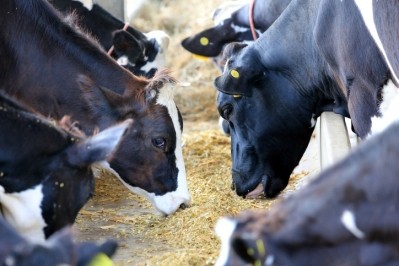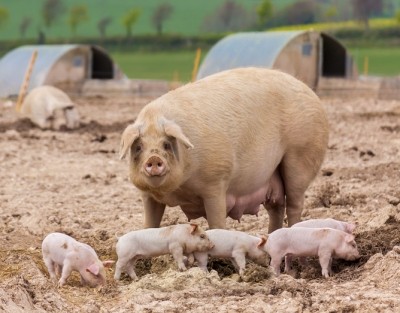Trade uncertainty may boost Canadian feed grain planting

Feed crop production details and forecasts were included in an agricultural attaché’s report published Monday from the US Department of Agriculture (USDA).
Overall, the ongoing trade uncertainty with oilseed exports to China, along with the strong demand for livestock feed are anticipated to support an increase in feed grain planting for marketing year (MY) 2019/20, the attaché said.
“China has suspended two Canadian grain companies and warned a third over alleged hazardous pests in canola shipments,” he said. “Shutting two of the largest shippers out of Canada’s number one market for canola seed exports has created uncertainty ahead of the MY 2019/20 planting season.”
The forecast is for a shift out of canola into wheat and barley, he added.
Carryover stocks are anticipated to drop for feed ingredients and grain, and non-durum wheat and barley stocks are expected to fall to 10-year lows, he said. However, durum wheat stocks are forecast to increase as the area planted falls.
“Strong overseas demand and tighter global supplies lifted Canadian exports of all feed grains, except durum, through the first half of marketing year (MY) 2018/19,” the attaché said. “While durum exports through January 2019 slumped 18% from MY 2017/18 levels, largely on reduced demand from Italy, non-durum wheat exports were up 8%, barley exports were up 22%, corn exports were up 52%, and oat exports were up 3%.”
“US corn shipments into Western Canada through the first half of MY 2018/19, supporting relatively high cattle stocking rates and sustained ethanol production, represent the only economically significant imports of grains into Canada,” he added.
Feed grain production highlights
Weather conditions in 2018/19 increased wheat production 6% to 31.8m metric tons, the attaché said. However, feed wheat use declined and ending stocks are set to be higher than initially expected.
Total wheat planting in Canada is anticipated to increase by 2% and yields are expected to improve in MY 2019/20, he said.
Increased area harvested boosted barley production 6% in 2018/19, he said. The area planted in barley is forecast to increase 10% in the coming marketing year based on export demands and uncertainty in the oilseeds market.
Corn production was down about 2% to 13.9m metric tons, the attaché said. However, in MY 2019/20 total area planted in the feed grain is anticipated to increase by 6%.
“High DON levels experienced during harvest in MY 2018/19 are not likely to reduce producer confidence in planting the crop in MY 2019/20,” he added.
Corn supplies in 2019/20 are anticipated to be flat based on lower ending stocks, he said. Corn production in Canada is expected to continue expanding as more is used in animal feed and ethanol production.
Oat production dropped 8% in 2018/19 as late-season moisture reduced yields and crop quality, he said. Area planted in 2019/20 is forecast to expand by 10% based on strong prices.
Feed use of the feed grain in MY 2018/19 is anticipated to fall from levels set the previous year as livestock producers turn to corn and wheat use in feed rations, the attaché said.
Use and trade
The number of cattle on feed in Canada was 10% above average in Alberta and Saskatchewan during 2018/19 which increased feed use demands for wheat, corn and barley in Western Canada, the attaché said. The anticipation is that increased feeding will continue through 2019/20 as domestic production of feed grains expands improving ingredient price.
“Slightly higher hog production projected through 2019 is expected to sustain steady demand for corn and feed barley,” he added. Although, there is anticipated to be a drop in the import of fed cattle in 2019.
Import of feed corn from the US remained steady through January even as the price of US corn and Canadian barley and wheat converged, he said. Feed price surges in March have been linked to seasonal buying patterns for feed grains before the start of road restrictions in the spring.
“Canadian provinces routinely restrict the maximum weight of truckloads when thawing moisture is trapped beneath pavement, reducing road strengths,” he added.
Wheat exports for the first part of the marketing year increased about 8%, the attaché said. But, imports of wheat from the US increased 34%.
“Non-durum wheat exports to China more than doubled through the first half of MY 2018/19, as US wheat shipments to China (3-year average of 480,000 MT over the same span) were nill,” he said. “Tighter exportable wheat supplies in Australia, another traditional supplier to the Chinese market, helped drive Australian shipments to China roughly 400,000 MT lower through the first half of MY 2018/19.”
Barley use in feed is expected to be flat in 2018/19 as cattle feeders turn to corn use in rations, he said. However, exports increased 22% in the first part of the current marketing year based on increased demand in Japan and drought in Australia, and imports dropped 25%.
Total corn exports increased 52% in the first part of 2018/19 based primarily on exports to Ireland and the UK, he said. However, imports of corn from the US expanded by 81% year-on-year.
Corn imports in MY 2019/20 are anticipated to drop 35% to about 1.3m metric tons as more barley, feed wheat and corn are planted in Canada, the attaché said.
Oat exports increased by 3% in the first half of 2018/19 compared to the same period the prior year, he said. The majority, about 85%, went to the US.
“Canadian oat exports in MY 2018/19 reflect increasing export diversification, as exports to Mexico and other trade partners (notably Japan, South Korea, China, and the United Arab Emirates) represented a higher percentage of Canadian exports despite lower US oat production,” he added.
Imports were down about 16%, he said. Ending stocks are forecast to be down 23% at the end of 2018/19 compared to the previous year’s levels.
Policy considerations
Changes made to the import process for unprocessed grains and oilseeds or meals and intended for use in livestock feed were made in March in an attempt to address concerns of African swine fever, the attaché said. “The order provides a list of 'Control Zones' whereby '[a]ny grain or oilseed, and their associated meals, that are destined for use in livestock feed or for further processing or for cleaning' cannot be imported,” he added.
“The restrictions are not expected to have a discernible effect on trade flows, as Canada imports insignificant volumes of grains or oilseeds from designated control zone countries,” he said. “Canada imports less than 4% of corn, soymeal and/or barley, by volume of total imports, from any country other than the United States, which is not listed.”












